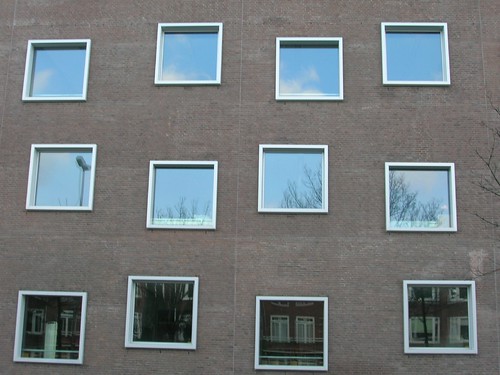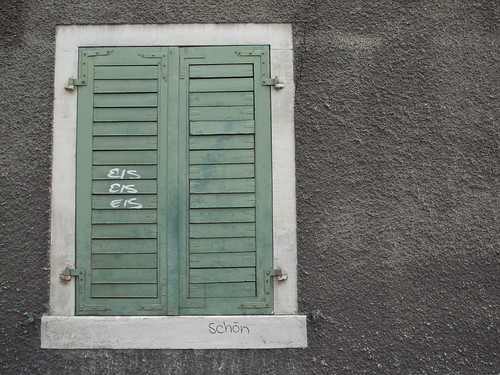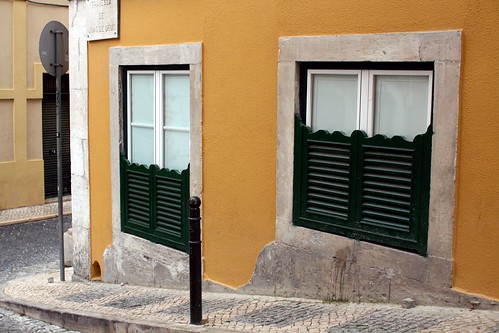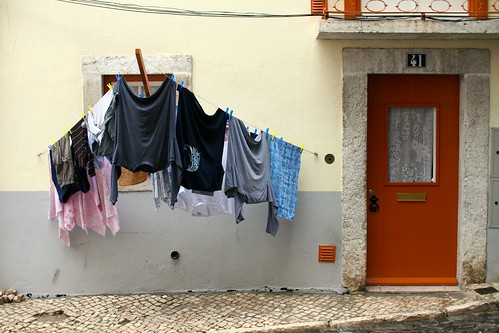Windows and their relative transparency are an architectural element that I tend to always observe when traveling. Indeed, the presence of shutter and curtain is an interesting material indicator of how people deal with privacy. Some cultures are more likely to leave things open/transparent (as in the first picture above from Utrecht in the Netherlands) than others (the second one has been taken in Zürich, Switzerland). However, the absence of shutters or curtains is not an invitation for passers-by to look at what's happening inside the house. It's a different social norm. Besides, shutter are not just meant to be used for privacy reasons, it's also a good way to regulate indoor temperature (keeping the heat in the winter or a fresh atmosphere in the summer)
During my trip to Portugal last week, a different sort of shutter attracted my attention. Called "meia persianas", it's an interesting middle-ground between the absence and the presence of shutter.
From what I was told, this sort of shutter acts as a low-cost air conditioning system (since the house's walls are very thick and retain the heat/cool) AND a good way to protect one's window by letting it open while being sure that no-one can come through the window. Furthermore, it also allows to see without being seen.
Another aspect of this portuguese architecture is also the presence of ropes to dry things above the window. But this is definitely not enabled by the semi-closure. It's just a side-use of the window that I found relevant to document.
So, what is the take-away here? simply that there are different ways architecture embeds privacy issues, practices and norms: from the transparent glass to the sealed window and the half-half solution of the portuguese "meia persianas". This last solution is perhaps the most relevant when it comes to current debates about social software/location-based services privacy issues.



